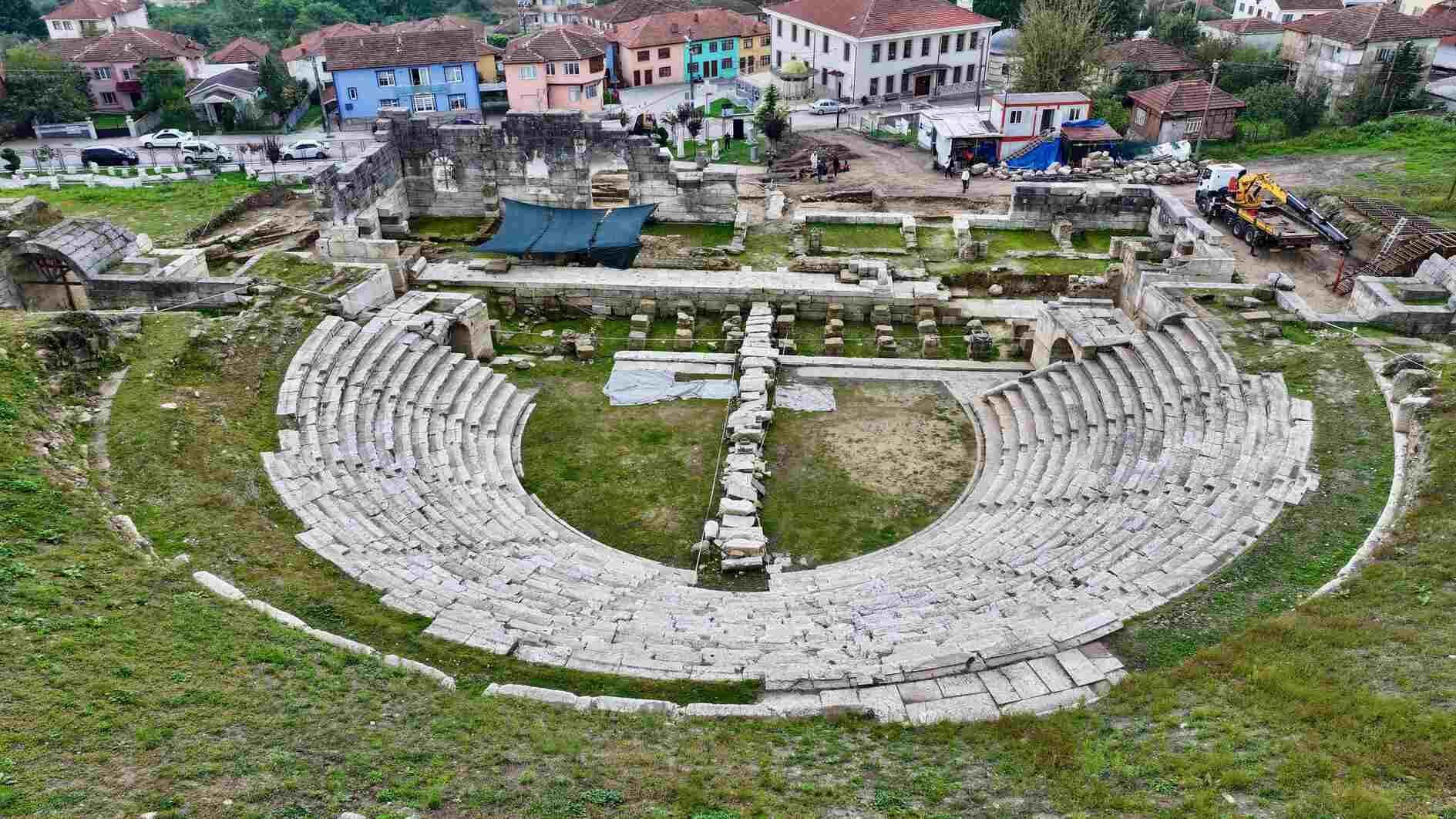
Excavations in the ancient city of Prusias ad Hypium, located in the northwestern province of Düzce, have reached their final phase, with plans to open the site’s theater, which has a capacity of 10,000 spectators, for tourism next year.
Ninety-five percent of the excavations carried out in the ancient city by the Konuralp Museum Directorate for approximately five years have been completed.
Dating back to the third century B.C., the city has survived numerous earthquakes over the centuries, and remarkably, the theater's structural integrity has remained intact. Archaeologists have made significant discoveries during the excavation, shedding new light on the region’s ancient history.
Professor Musa Kadıoğlu, the project's scientific adviser and a faculty member of Ankara University’s Department of Archaeology, confirmed that excavation efforts are focused on finalizing the theater section.
Kadıoğlu noted that work continues near the temple's southern area, where new structures have been uncovered. Restoration efforts in this section will commence soon, enhancing both accessibility and visual appeal.
“When we remove these new structures and complete the restoration, the site will become more visitable and easier for the public to appreciate,” Kadıoğlu said.
During the excavations, archaeologists discovered several notable artifacts, including a statue head of Medusa, known in Greek mythology as the snake-haired monster that turns those who gaze into her eyes to stone, along with mask sculptures, grotesque figures, and a vaulted ceiling estimated to be around 2,000 years old.
In the stage section, relief sculptures depicting the Greek god Apollo and the hunter Akteon were also found. A mosaic featuring a lion, related to the “Dionysus Cult Space,” along with a statue head believed to belong to Alexander the Great, were discovered during last year’s excavations, which largely uncovered the theater structure.
The findings indicate that the theater was used for purposes beyond its original intent during the Eastern Roman period and served as a residential area, particularly during the Ottoman period.
Notably, an 1,800-year-old bust thought to depict M. Iulius Proclus, who constructed the stage building of the ancient theater, was also unearthed.
With the majority of the ancient structure exposed and final restoration stages underway, the Prusias ad Hypium theater is set to open for tourism in 2025, providing visitors with a glimpse into the region’s rich archaeological and cultural heritage.